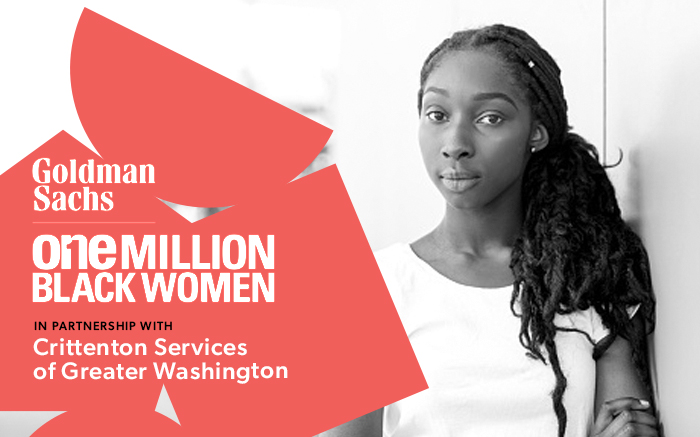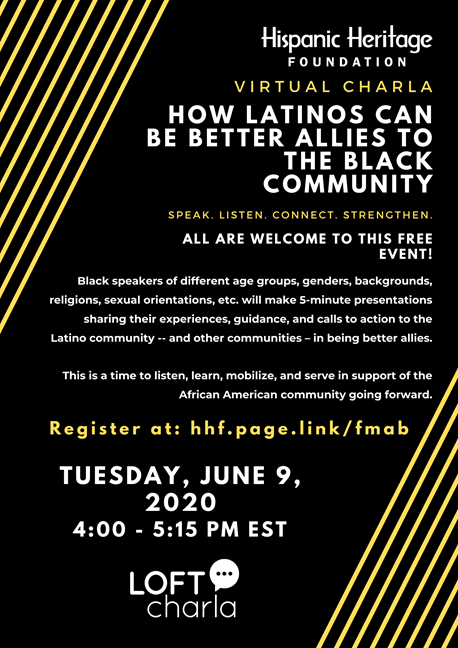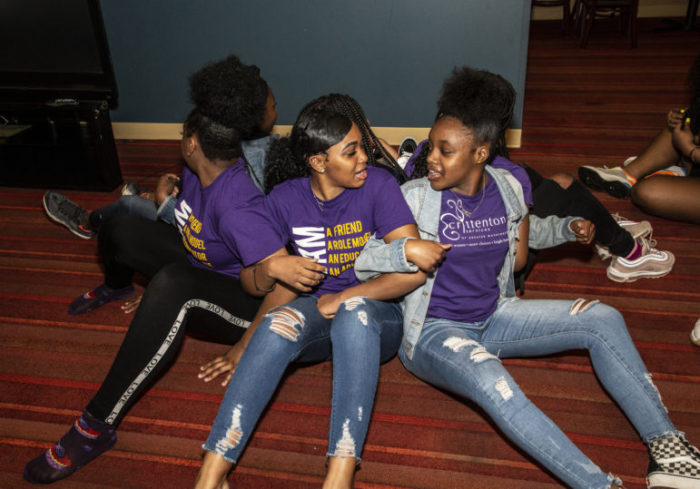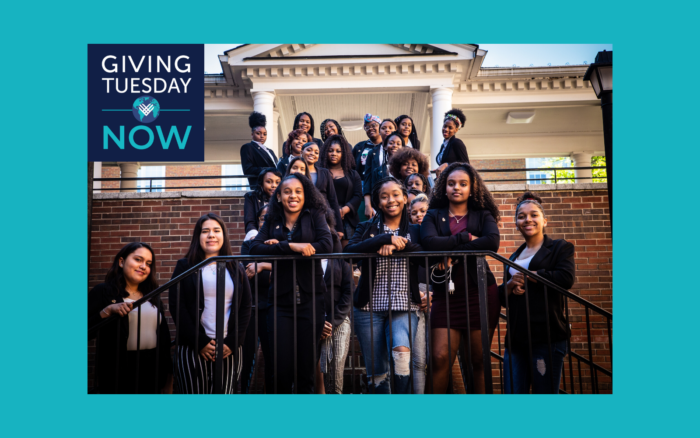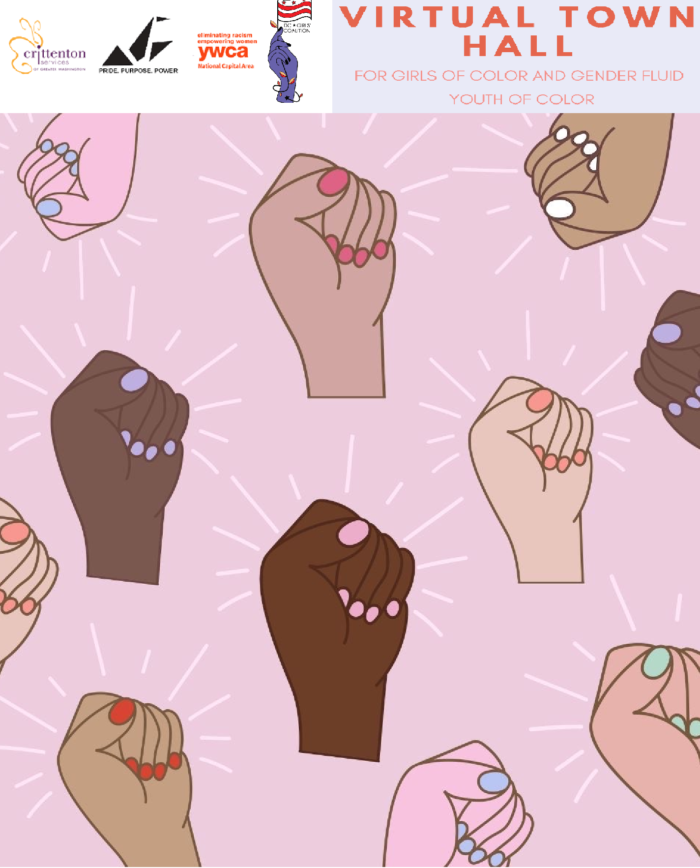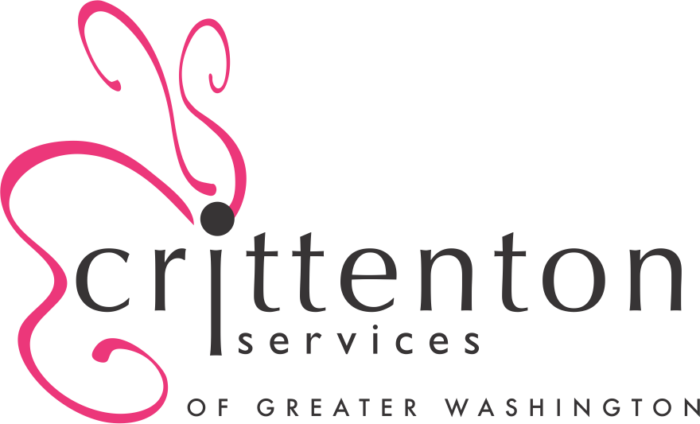Virtual Charla: How Latinos Can Be Better Allies to the Black Community on Tuesday, June 9th
Join our President & CEO Siobhan Davenport tomorrow with the Hispanic Heritage Foundation for the Emergency Charla: How Latinos Can Be Better Allies to the Black Community on Tuesday, June 9th from 4:00pm to 5:15pm EST. Register for this important conversation HERE: https://hhf.page.link/fmab.
Combating Racism & Inequity: A Call to Action for Teen Girls and Their Families
Combatting Racism & Inequity: A Call to Action for Teen Girls and Their Families from Siobhan Davenport, President & CEO of Crittenton Services of Greater Washington.
You may know me as the President and CEO of Crittenton Services of Greater Washington, an organization focused on the well-being, safety, equity and bright futures of our 600 mostly Black and Brown girls living in DC and Montgomery County, MD.
But I am also a Black woman and mother of a Black teenage daughter and son and the issues of racism, inequality, and police brutality against Black and Brown people that are now so publicly discussed are also deeply personal. I fear for my children’s safety as they perform mundane and daily activities – going for a run in our mixed race community, wearing a hoodie while running errands or bird watching in one of the beautiful parks – all innocent activities that, with just a phone call to the police, can become dangerous and life threatening.
And yet, even during this time of public pain and protest, I have hope.
I have hope seeing Crtittenton girls, their friends, neighbors and the world using their anger and fear to lift their voices and march in our streets to protest the the racist murder of an innocent Black man, George Floyd and the long line of Black men and women —Breonna Taylor, Sandra Bland, Michael Brown—who died at the hands of those who are sworn to protect and serve all Americans.
I have hope because I work with a team of dedicated professionals who create the trust and safe space for Crittenton girls to understand and empower themselves to overcome the daily inequities of racism, sexism and classism that they encounter in school, work, on public transportation and just about every other aspect of their daily lives.
I have hope in the network of support for Crittenton and the many peaceful protests calling for an end to structural racism. I know that Black and Brown people cannot change systems by ourselves and that we need the actions of White allies so that all Americans feel safe and have access to opportunity in our country.
A Call to Action
We are at an important moment in time. I am calling on the larger Crittenton community to come together in support of the voices of Black and Brown girls as we seek the systemic change essential to ensuring an equitable society. We all have a role to play and, having been asked by many in our community, have included concrete actions we can take to continue the change we all support.
Hear from Teen Girls
We invite you to join our virtual High Tea: Talk With A Teen Girl on Thursday, June 25th to have a much-needed open conversation with our teen girls. It is an opportunity to hear directly from and partner with our Black and Brown teen girls to move forward on advocating for equity, including very timely issues related to education, equity and mental health.
Get the Facts
In 2019, we released a report, Declare Equity for Girls: It’s Time!, that is a call to action for our District of Columbia teen girls and the adults that care about them and their future. The report illustrates with hard, verifiable data, the harsh inequitable realities that our teen girls face. Read and share this report with your network so you have a shared understanding of why the systems need to change.
Get Involved
Change happens when we take action and helping to educate and encourage our youth to identify a cause they feel passionate about and then translate that passion into votes for elected officials that support policies to address racism, sexism and classism.
When We All Vote is a non-profit, nonpartisan organization that is on a mission to increase participation in every election and close the race and age voting gap by changing the culture around voting, harnessing grassroots energy, and through strategic partnerships to reach every American. There are opportunities for adults and families to be Voting Squad Captains and separately, for high school teens to engage (and even hired) in their National Student Ambassador Program.
Staying Connected: Creating Change
The Crittenton community knows that the not-so-secret sauce to our success is that every team member cares about every teen girl we serve. Being a caring adult — centering and supporting others — is what we are each called to be not only for Crittenton girls, for the next generation and for the Black and Brown communities facing systemic racism, sexism and classism.
Grateful for your support and friendship as we commit and recommit to the change we collectively seek.
Sincerely,

President & CEO
Thank You for your support of our 600 teen girls!
| Crittenton Community, I am deeply touched by your generosity toward our teen girls and their families. Thank you for your kindness of giving to our Giving Tuesday Covid-19 Emergency Fund. Since March 13th, we have continued virtual service to our girls and helped to serve their families, including 375 adults, children and babies. We have also provided resources to those who have contracted or are recovering from COVID-19. I’m so proud of our team, who practice the mission, and are a source for factual information, comfort and continuity for our teen girls. We are grateful to be in a position to help provide some relief for our girls and their families during these uncertain times. I appreciate you greatly helping us in reaching our goal of raising an additional $5,000 to match the $5,000 that we received from the V&S Foundation. These funds will go a long way in helping our teens and families during this crisis. Thanks to your generosity, in partnership with HHS – SON, Victims’ Rights Foundation, Gandhi Brigade and Small Things Matter, we delivered much needed food essentials and hygiene products to 100 families yesterday afternoon. With gratitude,  Siobhan Davenport, President & CEO |
An internship during the coronavirus pandemic is a crash course in adaptability
April 22, 2020 5:45 PM EDT
Subscribe to Outbreak, a daily roundup of stories on the coronavirus pandemic and its impact on global business, delivered free to your inbox.
Clarissa Garcia began her internship before COVID-19 hit. Her job at WishSlate Inc., an e-commerce app, was focused on PR and media relations. Unsurprisingly, her tasks quickly rendered incredibly difficult due to the immense focus that the media is having on the virus.
“It’s been pretty frustrating for me,” she considers. “I’ve had no success so far”. But while difficult, this unique situation is giving her an unexpected insight in navigating a start-up during a crisis. Tuning into weekly Skype meetings with the company’s CEO has kept her well informed as to how the company is navigating everything. “I find it helpful, and it keeps me and the rest of the interns engaged,” she says.
Interns like Garcia are used to work hard to prove themselves in temporary positions, but doing that remotely—and in the middle of a global health crisis—definitely add to the challenge. Some of the high schoolers, higher education students, and those who are in full-time, post graduation internships during the school year are lucky enough to make the remote transition. Others are even more fortunate, with their employers offering full-time positions upon graduation. But many are completely left without the experience—and sometimes money—they counted on having.
Laina Milazzo, a second year law student at Touro Law Center, was working as a legal extern at the Suffolk County District Attorney’s office in Massachussetts, in the district court bureau. Once COVID-19 hit, all externs were told not to return until further notice. The next day, the courts closed indefinitely. “Since it was an externship we get credit for, they needed to find somewhere for us in order to actually receive credit for all the work we had already done,” says Milazzo.
She was reassigned to the appeals bureau, which allowed her to do research assignments from home. And she’s adapted: “The research is so different from the work I was doing in the district court bureau,” she says. “But now I have hands-on experience in two totally different bureaus—and I think overall it’ll help my career.”
Some of the students in Milazzo’s class weren’t able to switch to another department. Although they won’t substitute the hands-on experience of an actual internship, their professor is creating new assignments for them to do in order to still gain knowledge and receive credit for the time they put in already.
Zaria Wilson faced a similar disappointment. A graduating high school senior, she’s been interning at the National Institutes of Health in the Department of Cellular Development and Neurobiology since last June. With her work taking place completely within a lab, the internship had no way to translate to remote work. Plus, her schedule was tied to her Maryland-based school, so the day it shut down, the internship ended.
While Wilson is fortunate to have interned since June, she’s being proactive to make up for the last few months at the lab that she’s losing. “I’ve been doing my best to make up for the last months of the internship by doing some online courses and staying aware of the science field and biology.”
However optimistic, adapting may seem too far-fetched for some. Wilson is worried about how losing her internship stipend will affect her paying for college. While keeping up with her reading and online courses, she’s applying for scholarships. And Sammy, who had graduated from high school last June, wouldn’t be starting college until the fall.
He had been working as an intern in an investing firm in New York City for less than a month when his office was suddenly shut down due to COVID.19. Since then, Sammy hasn’t worked for them, or for anyone else, for that matter.
“I know that people like me (interns) are going to be amongst the last to be hired back,” he fears. “I hope that my school will be well equipped to deal with helping us find opportunities. There aren’t really many for me to pursue right now.”
Our mission to help you navigate the new normal is fueled by subscribers. To enjoy unlimited access to our journalism, subscribe today.
What we learned from Girls and Gender Fluid Youth of Color at the COVID-19 Response Virtual Town Hall
Dear Crittenton Friends,
Last Thursday, we co-hosted The COVID-19 Virtual Town Hall for girls and gender fluid youth of color with Black Swan Academy, YWCA National Capital Area and DC Coalition for Girls. We learned so much from Dr. Mariam Savabi, MD MPH and Necole D. Martinez and, especially, all the girls and gender fluid teens who were honest about their challenges and insightful about solutions.
Our time together was inspiring and informative, yet a reminder that the crisis we face is much graver for it has exposed the fragility of systems that have not worked for decades for the communities in which we serve. Though local governments and schools have responded as best as they are able, this pandemic is devastating to vulnerable families. Yesterday we asked the teens “what can we do?” And they answered.
They shared real mental health challenges: the struggles with self-isolation, of not having a schedule, of worrying about their parents, their community and missing the comfort of predictable routines.
They shared frustration with school: the challenges of dealing with uneven expectations and access to technology and teachers, of balancing school with new home responsibilities.
They shared their solutions: including the need for access to masks, hygiene and required products; of safe housing for community members who need to be quarantined and also for the homeless. They had ideas of how the government can be responsive, of how caring adults can encourage, how parents can access resources, of how together, we can create a community of care. And in their telling they showed us a way forward, a way we can work together to connect, encourage and grow these next generations of people.
At Crittenton we see a way forward. Core to our success is a caring adult providing judgement-free support, information, recommendations and referrals. While this has been essential to program delivery it is proving to be vital to responding to the current crisis. As have partnerships. We have an opportunity to work together, activating on Black Swan Academy’s call to action by signing the survey. LINK HERE http://thepeoplesdemandsdc.com/
At Crittenton we will continue to support girls in group and individually, make referrals and recommendations to the resources they need. We will test the idea of a senior-only group to address some of the real loss seniors are feeling as their graduations are canceled and colleges possibly postponed. We will continue to collect data on the individual and collective needs of 600 girls with a focus on their safety and mental well being. And we will continue to connect with incredible partners like you.
I look forward to connecting with many of you in the days and weeks to come as we navigate the unknown change and if we are persistent (and a little lucky), real opportunities to create real change for girls of color in the DMV.
With gratitude,
Siobhan Davenport
President & CEO
PS: Check out our Virtual Town Hall and hear for yourself the challenges girls and gender fluid youth of color are facing by listening to the recording HERE. (Access Password is L8^&11.7)
Who Does Home Care Fall On? Girls of Color Stepping Up for Their Families & Communities During the COVID-19 Crisis
By Siobhan Davenport
April 17, 2020
Undoubtedly, the COVID-19 crisis has shaken us all up. The very fabric of life as we know it has been transformed into a new, less favorable normal. As the dynamics of our country have changed with lockdown and stay-at-home orders, so too have the dynamics of home life. Parents are working from home, furloughed, or newly unemployed. With school closures, children—from daycare to college-aged—are home too. Families are juggling the tall task of finding a new balance, with limited resources, and heightened anxieties.
What is also clear, is that individuals across the country are feeling the consequences of these changes to varying extents, and in varying ways—and oftentimes those experiences are closely intertwined with the intersections of their gender, race, and socioeconomic status. This begs the careful consideration of how the changing home dynamics brought on by the COVID-19 pandemic are specifically and disproportionately impacting girls of color—and particularly girls of color from low-income communities. For one, it is having a huge impact on how girls of color are being asked to show up as everyday caregivers to keep their homes afloat.
Black and Brown girls are and have always been natural leaders in their schools, their families, and their communities. While continuously at odds with the structural and systemic barriers put forth by the many traces of racism and patriarchy in the U.S. system, they are innovative, ambitious, and solutions oriented. Because of their lived experiences, they are often wise beyond their years. We can all learn something in trusting their leadership.
But Black and Brown girls are also—too, often—the first to feel the brunt of the crisis in a way that, if not called out, can go unseen. In the world of COVID-19, girls of color are being asked to show up in new ways, with new responsibilities. Girls who still have to show up as students, in the new virtual classrooms that they may or may not have good access to. Girls who, though perhaps not or never employed themselves, are now at home balancing school and labor.
We’ve heard from so many of our girls—as young as 12 and 13—the new roles that they’re juggling while at home under lockdown. They have become the dominant care-provider for younger children in their homes, helping siblings adjust to home-school-style learning, aiding in the morning and nighttime routines, and assisting with homework help. They are supervising playtimes, changing diapers, mixing bottles, and putting babies down for naps. And they’ve been showing up for elderly grandparents, great aunts, and great uncles, too: supporting them in complex medication regimens, preparing their meals, aiding them in getting dressed and moving around.
And beyond just their homes, they are stepping up to support child care and elderly care efforts in their communities, for neighbors and community members who are essential workers, and must leave home during the crisis, with no other access to home care. Middle and high-school girls, unpaid, are working around the clock to support their families and communities.
While there is no clear solution to this dilemma, it’s important to understand the implications. It’s important for teachers and school leaders across the country to deeply understand that the circumstances of students across their virtual classrooms are not the same. Shifting education from classrooms to living rooms is not just a change in location—the COVID-19 crisis has changed the responsibilities and priorities of so many families, including young girls.While there are indeed homes across the U.S. where children can remain mostly-sheltered from the many impacts of this crisis—where a change in daily routine does not mean a change in duties or labor—that’s just not the reality for too many girls of color. So, let’s see girls for their leadership—when they rise to the occasion because they want to, or because they have. And let’s provide them with the additional support that they’ll need—mentorship, additional academic support, trauma-informed approaches to instruction, grace—to persevere through these times.
To learn more about Crittenton Service of Greater Washington and to support their work, please visit their website.
Siobhan Davenport is President and CEO of Crittenton Services of Greater Washington and has more than 16 years of experience working with youth that face structural barriers. With her leadership, CSGW launched its Declare Equity Initiative, focused on the inequities that girls of color face in schools through D.C. Metropolitan Area.
We are excited to share The Crittenton Chronicle, our new quarterly newsletter.
You can read more about important updates and stories of our first quarter by downloading our newsletter below:

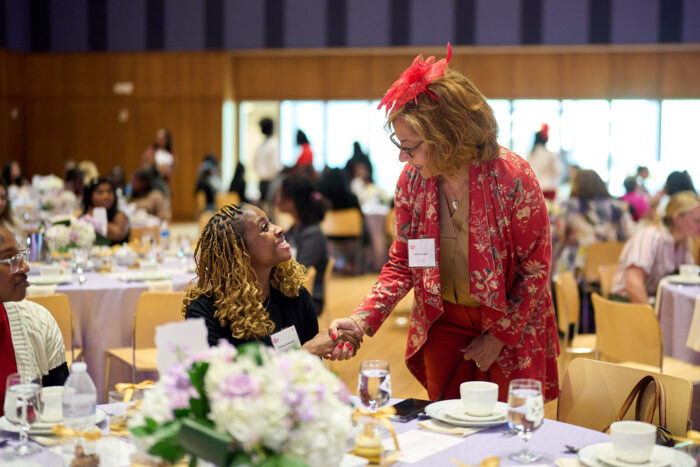
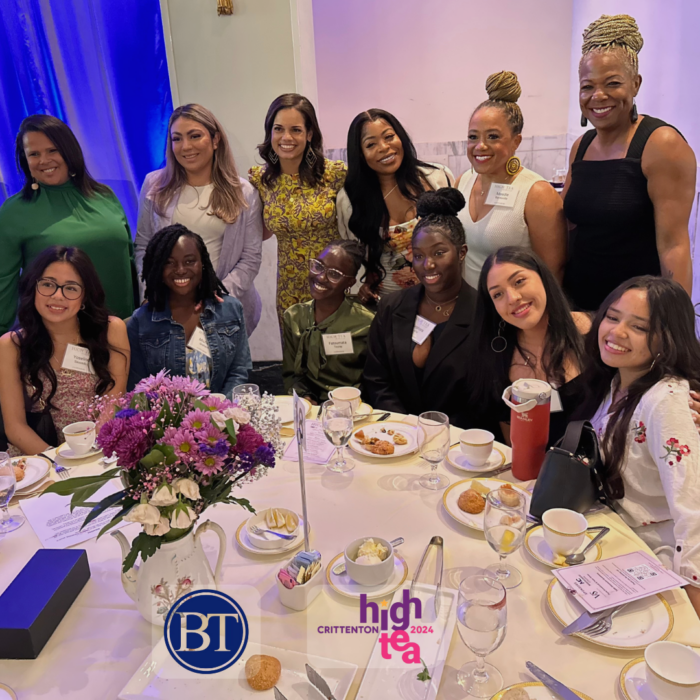


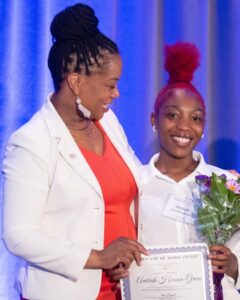
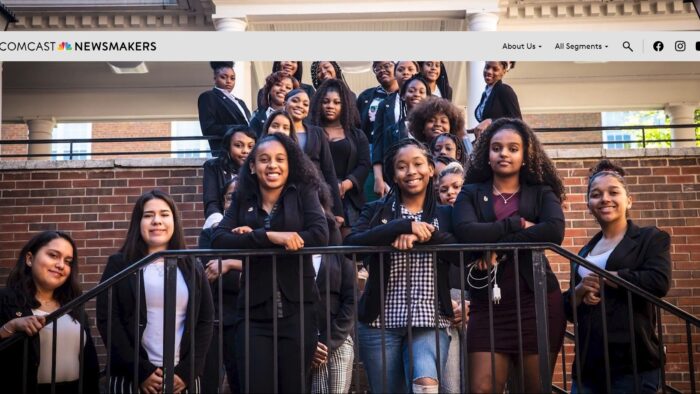



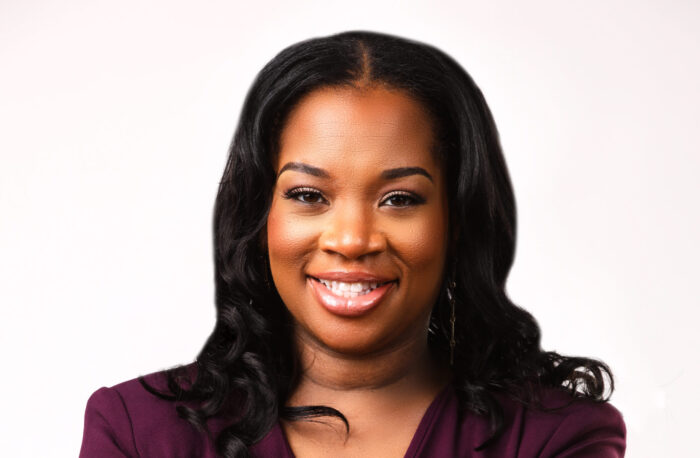

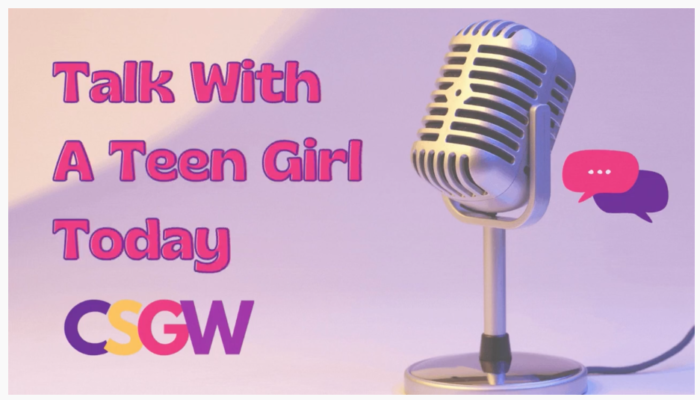
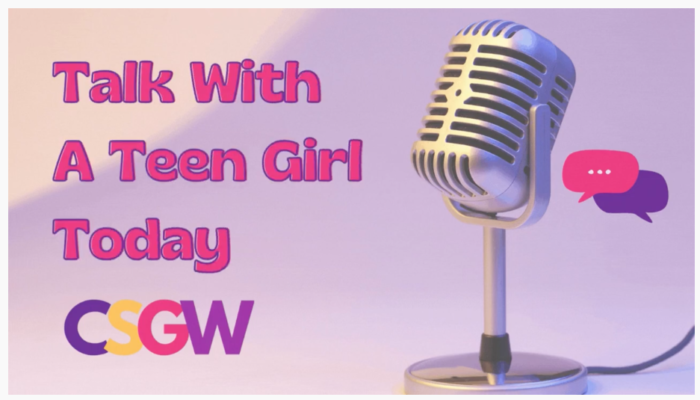

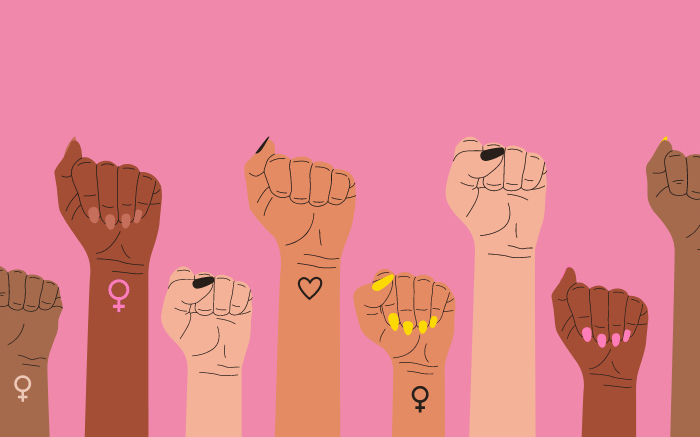

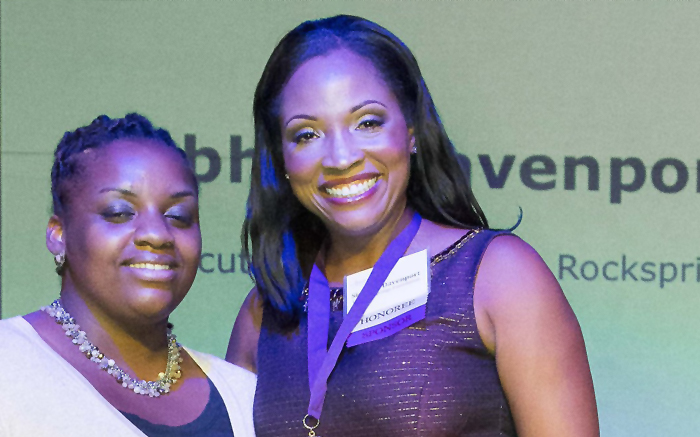
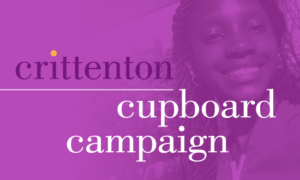 98% of Crittenton girls live in economically challenged communities. Over the years, when they’ve needed it most, we’ve stepped in—providing computers for school, safe rides home, feminine products, and school uniforms. During the pandemic we’ve also paid for groceries, car repairs, and, sadly, funeral expenses. Our aim is to prevent unanticipated financial hardships from snowballing into insurmountable challenges.
98% of Crittenton girls live in economically challenged communities. Over the years, when they’ve needed it most, we’ve stepped in—providing computers for school, safe rides home, feminine products, and school uniforms. During the pandemic we’ve also paid for groceries, car repairs, and, sadly, funeral expenses. Our aim is to prevent unanticipated financial hardships from snowballing into insurmountable challenges.